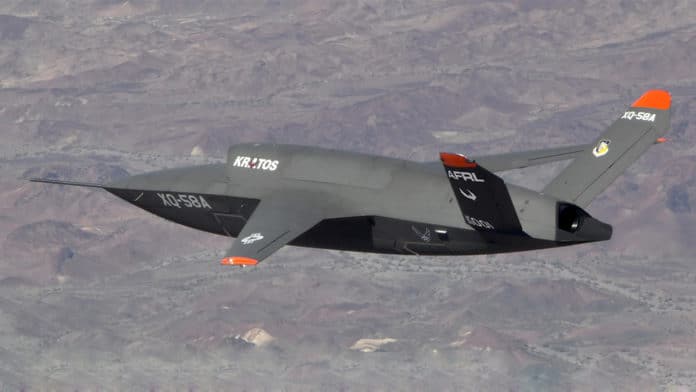In the United States, the tests of the unmanned XQ-58A Valkyrie drone demonstrator, interrupted last fall after an emergency landing resumed. The U.S. Air Force Research Laboratory (AFRL) successfully completed the fourth flight test of its low-cost XQ-58A Valkyrie UAV demonstrator on 23 January. The aircraft flew from Yuma Proving Ground in Arizona and landed safely in the desert.
According to the report, during a new test, the drone climbed to a great height, which they had not previously achieved. During the flight, information was collected on the vibration of the vehicle and the temperature of the on-board systems. The device made a successful landing at a training ground in Yuma (Arizona).
“Flying at this altitude helped us gather important data such as vehicle response to temperature and vibration, which will prepare us as we move toward our next flight test,” said the Program Manager Michael Wipperman.
During the 90-minute flight in October 2019, the XQ-58A completed all assigned tasks, which consisted of passing 56 control points, as well as two additional ones, remaining in excess of fuel at the end of the mission. Having successfully completed the main test program, the UAV headed for the landing point. The parachute worked normally, but the peculiar airbags designed to land the unmanned vehicle did not work correctly, causing damage.
The XQ-58A Valkyrie low-cost unmanned air vehicle is being developed by the Air Force Research Laboratory, along with partner Kratos Defense & Security Solutions, Inc. The projects aim at creating relatively cheap reusable vehicles in production that can serve as a fighter, but whose losses during the war will not be financially sensitive.
A total of five flights are planned for the XQ-58A, of which the fifth one is scheduled for later this year, will be a capability demonstration showcasing the ability of the vehicle to support operational needs. As part of the program, a guided unmanned vehicle is being created that can work in conjunction with the fifth-generation fighter F-22 Raptor and F-35 Lightning II, as well as, possibly, with other aircraft.
There are almost no technical details about the project. All that is known: the length of the apparatus is 28 ft 10 in (8.8 m), the wingspan is 22 ft 0 in (6.7 m), and the flight altitude – 13.7 thousand meters. Presumably, the device is designed for a range of about 2,449 mi (3,941 km). The weight of the combat load located in the internal compartment and on the external sling is up to 250 kg. Flight speed – 652 mph (1,050 km/h).
